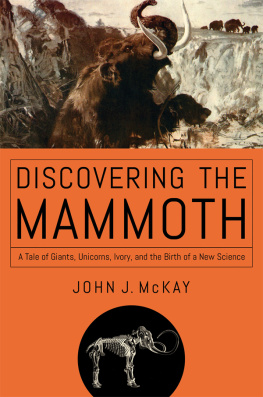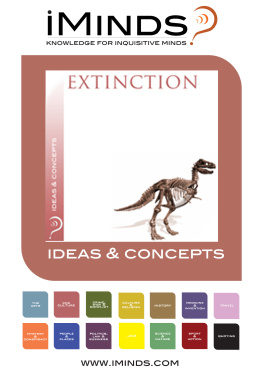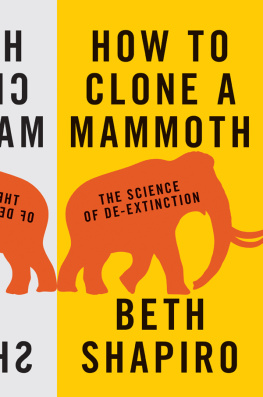John J. McKay - Discovering the Mammoth: A Tale of Giants, Unicorns, Ivory, and the Birth of a New Science
Here you can read online John J. McKay - Discovering the Mammoth: A Tale of Giants, Unicorns, Ivory, and the Birth of a New Science full text of the book (entire story) in english for free. Download pdf and epub, get meaning, cover and reviews about this ebook. year: 2017, publisher: Pegasus Books, genre: Religion. Description of the work, (preface) as well as reviews are available. Best literature library LitArk.com created for fans of good reading and offers a wide selection of genres:
Romance novel
Science fiction
Adventure
Detective
Science
History
Home and family
Prose
Art
Politics
Computer
Non-fiction
Religion
Business
Children
Humor
Choose a favorite category and find really read worthwhile books. Enjoy immersion in the world of imagination, feel the emotions of the characters or learn something new for yourself, make an fascinating discovery.
- Book:Discovering the Mammoth: A Tale of Giants, Unicorns, Ivory, and the Birth of a New Science
- Author:
- Publisher:Pegasus Books
- Genre:
- Year:2017
- Rating:4 / 5
- Favourites:Add to favourites
- Your mark:
Discovering the Mammoth: A Tale of Giants, Unicorns, Ivory, and the Birth of a New Science: summary, description and annotation
We offer to read an annotation, description, summary or preface (depends on what the author of the book "Discovering the Mammoth: A Tale of Giants, Unicorns, Ivory, and the Birth of a New Science" wrote himself). If you haven't found the necessary information about the book — write in the comments, we will try to find it.
The fascinating saga of solving the mystery of this ancient animal who once roamed the north countryand has captivated our collective imagination ever since.
Today, we know that a mammoth is an extinct type of elephant that was covered with long fur and lived in the north country during the ice ages. But how do you figure out what a mammoth is if you have no concept of extinction, ice ages, or fossils? Long after the last mammoth died and was no longer part of the human diet, it still played a role in human life. Cultures around the world interpreted the remains of mammoths through the lens of their own worldview and mythology.
When the ancient Greeks saw deposits of giant fossils, they knew they had discovered the battle fields where the gods had vanquished the Titans. When the Chinese discovered buried ivory, they knew they had found dragons teeth. But as the Age of Reason dawned, monsters and giants gave way to the scientific method. Yet the mystery of these mighty bones remained. How did Enlightenment thinkers overcome centuries of myth and misunderstanding to reconstruct an unknown animal?
The journey to unravel that puzzle begins in the 1690s with the arrival of new type of ivory on the European market bearing the exotic name mammoth. It ends during the Napoleonic Wars with the first recovery of a frozen mammoth. The path to figuring out the mammoth was traveled by merchants, diplomats, missionaries, cranky doctors, collectors of natural wonders, Swedish POWs, Peter the Great, Ben Franklin, the inventor of hot chocolate, and even one pirate.
McKay brings together dozens of original documents and illustrations, some ignored for centuries, to show how this odd assortment of characters solved the mystery of the mammoth and, in doing so, created the science of paleontology. 8 pages of color illustrations
John J. McKay: author's other books
Who wrote Discovering the Mammoth: A Tale of Giants, Unicorns, Ivory, and the Birth of a New Science? Find out the surname, the name of the author of the book and a list of all author's works by series.
















